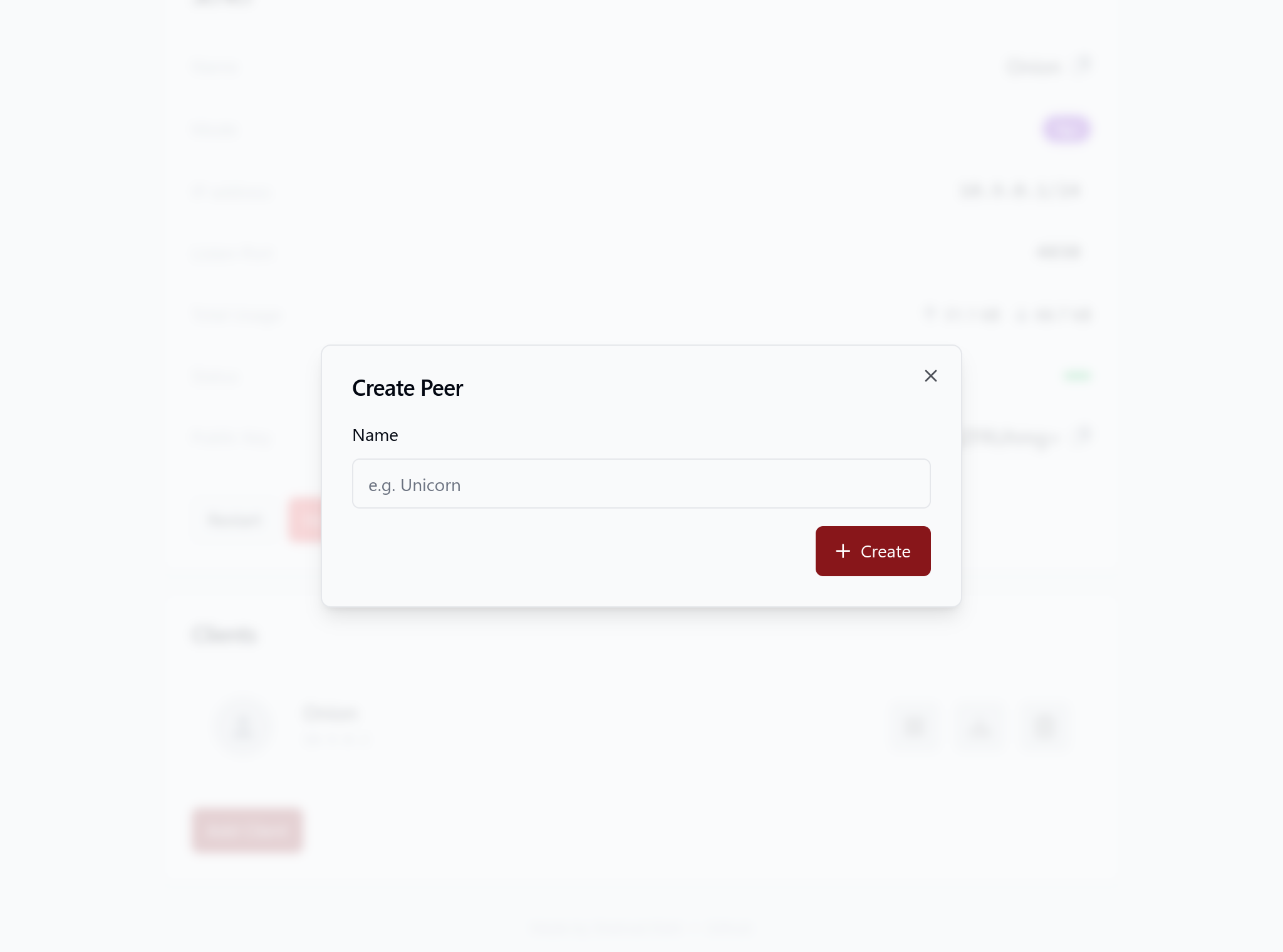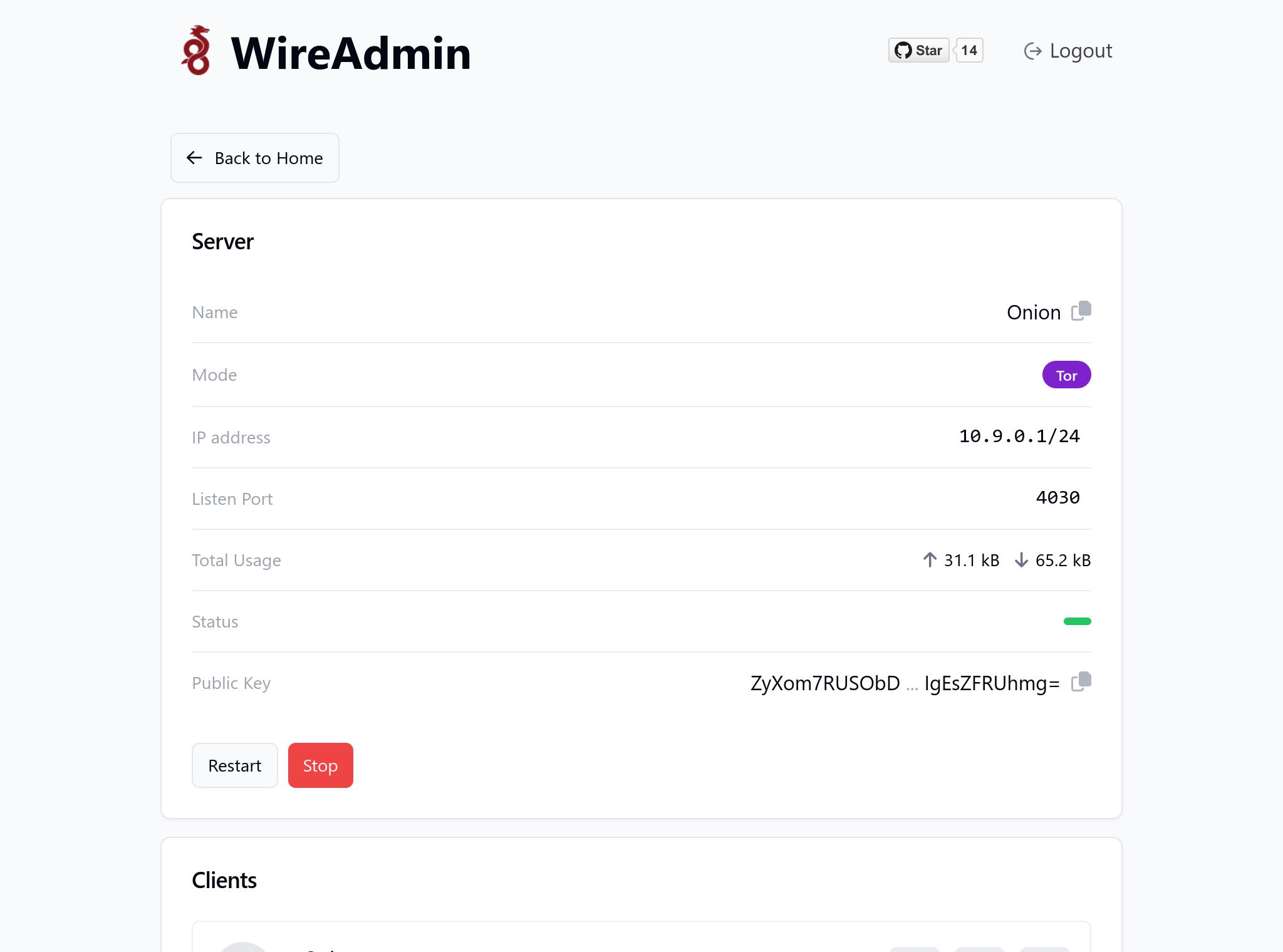| .github/workflows | ||
| assets | ||
| bin | ||
| config | ||
| web | ||
| .dockerignore | ||
| .gitignore | ||
| docker-compose.dev.yml | ||
| docker-compose.yml | ||
| docker-entrypoint.sh | ||
| Dockerfile | ||
| Dockerfile-Dev | ||
| LICENSE | ||
| package.json | ||
| pnpm-lock.yaml | ||
| README.md | ||
WireGuard GUI (Easy Admin UI)
 |
 |
 |
Features
- Easy-to-use web-based admin UI
- Support for multiple users and servers
- Support for Tor for anonymized connections
- List, create, delete, or modify any server or user
- Scan QR codes or easily download the client configurations.
Requirements
- A host with a kernel that supports WireGuard.
- A host with Docker installed.
Installation
1. Install Docker
To install Docker, go to the official documentation and install a version that meets your environment's requirements.
2. Persistent Data
WireAdmin uses redis to store the WireGuard configurations and their data at /data. It's important to mount a volume
at this location to ensure that your data is not lost during container restarts or updates.
Create a docker volume
docker volume create wireadmin-data --driver local
3. Run WireAdmin
Install WireAdmin using the command line:
docker run --rm \
-e WG_HOST=<YOUR_SERVER_IP> \
-e UI_PASSWORD=<ADMIN_PASSWORD> \
-p "3000:3000/tcp" \
-p "51820:51820/udp" \
-v "wireadmin-data:/data" \
--cap-add=NET_ADMIN \
--cap-add=SYS_MODULE \
--sysctl="net.ipv4.conf.all.src_valid_mark=1" \
--sysctl="net.ipv4.ip_forward=1" \
litehex/wireadmin:latest
Please note that the port 3000 is for the WebUI, and it's up to you to remove it after configuring the Servers/Peers.
IMPORTANT: When creating each server, ensure that you add the port exposure through Docker. (The port
51820is added as an example.)
Environment Options
These options can be configured by setting environment variables using -e KEY="VALUE" in the docker run command.
| Option | Description | Optional |
|---|---|---|
WG_HOST |
The public IP address of the WireGuard server. | |
UI_PASSWORD |
The password for the admin UI. | |
ORIGIN |
In case you want to access the web-admin remotely, you must set this to the host you are using, for example, http://<hostname>:3000. |
✔️ |
TOR_USE_BRIDGES |
Set this to 1 and then mount the bridges file at /etc/torrc.d/bridges.conf. |
✔️ |
TOR_* |
The Torrc proxy configuration. (e.g. SocksPort as TOR_SOCKSPORT="9050") |
✔️ |
Reporting
If you have any questions, bug reports, and feature requests, please create an issue on GitHub.
Support the Project
Seriously, this project is free and open-source, and all I ask for as support is for you to give a star to the repository.
License
This project is licensed under the GPL-3.0 License - see the LICENSE file for details
